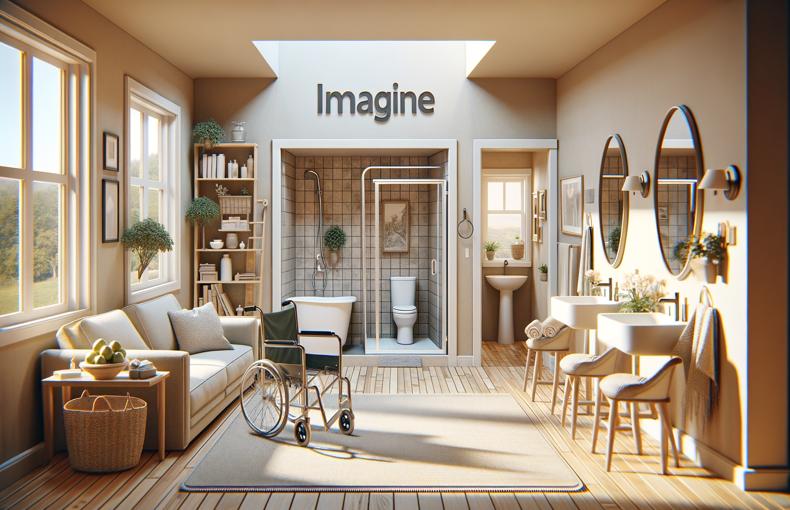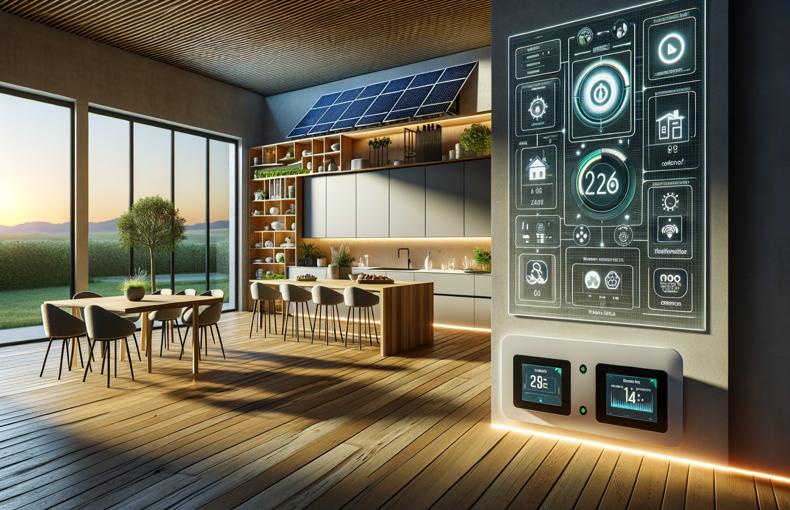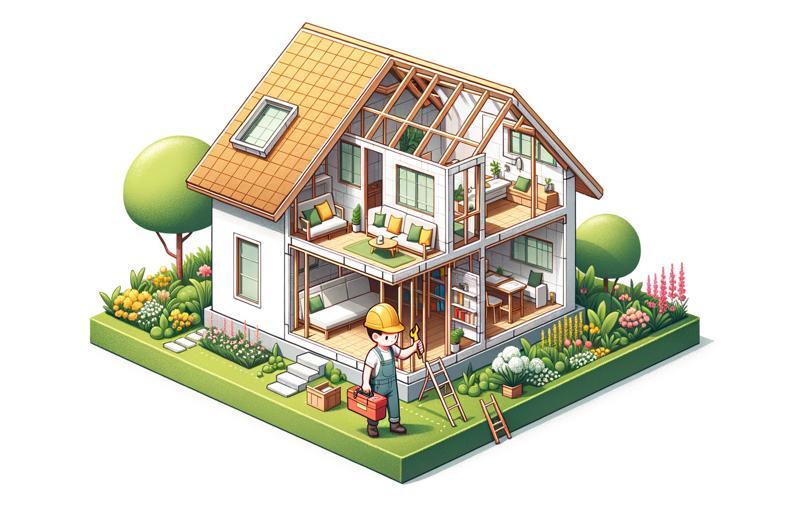Building for the Future: How to Design a Home That Grows with You
When you’re designing your dream home, it's tempting to focus on immediate wants and needs. However, to truly build a home that serves you in the long term, you need to think ahead. A home that "grows with you" adapts to your evolving lifestyle, accommodates changing family dynamics, and remains functional for years to come. From flexible spaces to sustainable choices, forward-thinking design is key to future-proofing your home. In this guide, we’ll dive into how you can design a home that evolves with your needs, ensuring it remains a cherished space no matter what the future holds.
1. Flexible Floor Plans: Design with Adaptability in Mind
One of the best ways to design a home that grows with you is by creating a flexible floor plan. Life circumstances can change rapidly—perhaps your family expands, you begin working from home, or you simply need extra space for hobbies or guests.
Open-concept living offers the flexibility to rearrange spaces as needs shift. For example, a large living area can easily be sectioned off into a home office or playroom as required. Bonus rooms, lofts, and basements also provide excellent opportunities for future customization without major renovations.
Tips for Creating Flexible Spaces:
- Opt for multi-purpose rooms that can transition between different functions (e.g., guest room to office, playroom to study).
- Include movable partitions or sliding walls to allow easy reconfiguration.
- Ensure ample storage to reduce clutter and keep rooms versatile.
2. Accessible Design: Think Long-Term Usability
Accessibility isn't just for those with mobility challenges—it’s for everyone who wants to age in place. Even if it’s not an immediate concern, designing a home with universal design principles ensures it will meet your needs as you grow older.
Consider elements like wider doorways, zero-step entryways, and lever-style door handles to make the home more accessible. These adjustments make life easier not just for older adults but for families with young children, or anyone recovering from an injury.
Universal Design Features to Include:
- Single-level living or master suites on the main floor.
- Walk-in showers with built-in seating and handrails.
- Smart home automation, like voice-activated lighting, for enhanced ease of use.
3. Energy Efficiency: Build with Sustainability in Mind
Building a home that grows with you isn’t just about how it functions inside; it’s also about how it impacts your finances and the environment. Energy-efficient design ensures your home remains affordable to operate as energy prices fluctuate and helps reduce your carbon footprint.
Integrating solar panels, insulated windows, and energy-efficient appliances is an investment that will save you money over time. You can also look into geothermal heating, which, while initially costly, offers long-term savings through reduced energy usage.
Green Building Strategies:
- Use sustainable building materials such as bamboo, recycled steel, or reclaimed wood.
- Invest in advanced insulation to maintain indoor temperatures without excessive heating or cooling.
- Incorporate smart thermostats and energy monitoring systems to optimize energy use.
4. Room for Expansion: Plan for Future Additions
Even if you don’t need extra square footage right now, planning for future expansion can save you time and money later. Consider areas where you can add on without disrupting the existing structure—this could be a garage, attic, or outdoor space that can be converted into living areas down the road.
If you’re building on a large lot, you might want to leave space for a future home office, guest suite, or even an in-law unit. As work-from-home trends increase and multigenerational living becomes more common, having the ability to add functional space can be invaluable.
Key Considerations for Expansion:
- Design a layout that supports future construction without needing major structural changes.
- Build in plumbing and electrical access for future additions such as a bathroom or kitchenette.
- Use modular design elements, such as prefabricated walls or roofing, to simplify future expansion.
5. Future-Proof Technology: Embrace Smart Home Innovations
Smart home technology is rapidly evolving, and it’s important to integrate systems that can grow with your needs. Homes that include the infrastructure for smart home automation are easier to manage, more secure, and can significantly improve energy efficiency.
From smart lighting and automated window treatments to security systems and voice-activated devices, ensuring your home is wired for future technology is a sound investment. You might not need all these features right now, but installing Cat6 cabling or fiber optics ensures that your home can handle tech upgrades as they become available.
Smart Home Features to Consider:
- Home automation hubs that control lighting, temperature, and security.
- Energy-efficient appliances that can be remotely controlled.
- Home security systems with cameras and sensors integrated into a central control app.
6. Outdoor Spaces: Create a Functional Yard
As your lifestyle evolves, your outdoor space will likely serve different purposes. A versatile outdoor area can grow from being a child-friendly backyard to a serene retreat or even an outdoor entertainment space. Designing an adaptable landscape allows you to change the space’s use as your needs evolve.
Incorporating elements like patios, decks, and garden areas that can be easily expanded or repurposed ensures that your outdoor space remains functional. Including native plants and low-maintenance landscaping will also help reduce the effort required to maintain your yard as your life gets busier.
Outdoor Design Tips:
- Create zoned outdoor spaces for different activities, such as dining, lounging, or playing.
- Consider low-maintenance materials like composite decking or permeable pavers.
- Use outdoor lighting and heating elements to extend the use of your yard year-round.
Conclusion
Building a home for the future requires more than just aesthetic choices—it requires a thoughtful approach to functionality, sustainability, and adaptability. By focusing on flexible spaces, accessible design, energy efficiency, and future-proofing technology, you can ensure that your home evolves with you, meeting your needs for years to come.
Whether you’re building your first home or updating an existing one, taking a long-term approach to design is essential for creating a space that truly grows with you.
Additional Resources:
- Houzz: Designing a Flexible Floor Plan for the Future
- The U.S. Department of Energy: Guide to Energy Efficiency
- Smart Home Tech to Consider











